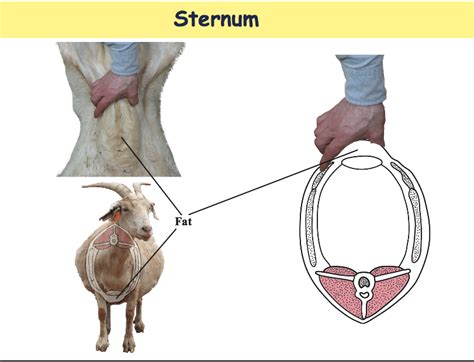Alfalfa Pellets: A Guide to Goat Body Condition Scoring
Alfalfa pellets are a staple in many goat diets, providing a concentrated source of protein and energy. However, simply feeding alfalfa pellets without monitoring your goats' body condition can lead to overfeeding and health problems, or conversely, underfeeding and poor health. Understanding body condition scoring (BCS) is crucial for responsible goat ownership and ensuring your herd thrives. This guide will explain how to use alfalfa pellets effectively while maintaining optimal body condition in your goats.
What is Goat Body Condition Scoring?
Goat body condition scoring (BCS) is a visual assessment of your goat's fat reserves. It's a valuable tool for monitoring their overall health and nutritional status. A BCS system typically uses a scale, often from 1 to 5, with 1 representing emaciated and 5 representing obese. A healthy goat generally scores between 2.5 and 3.5.
Using a BCS system allows you to proactively manage your goat's diet, preventing both weight loss and weight gain, which can negatively impact their overall wellbeing and reproductive success. By regularly checking BCS and adjusting the amount of alfalfa pellets (and other feed) accordingly, you can keep your goats at their ideal weight.
How to Assess Goat Body Condition
Assessing your goat's BCS involves a careful visual and physical examination. Here's a step-by-step guide:
-
Observe from a Distance: Initially, examine your goat from a distance to get a general impression of its overall body shape. Does it appear thin, normal, or overweight?
-
Feel the Spine: Run your hand along the goat's backbone. In a goat with a good BCS, you should feel the spine, but it shouldn't be prominent or sharp. A very thin goat will have a prominent spine that's easily felt, even under pressure.
-
Check the Ribs: Gently palpate the ribs. You should be able to feel the ribs, but they should not be easily visible or very sharp.
-
Assess the Tailhead: Examine the area around the tailhead. In a good BCS goat, there's a noticeable, but not excessive, fat cover over the tailhead.
-
Check the Withers: Observe the area just behind the neck (withers). A well-conditioned goat will have a smooth, rounded appearance here, whereas a thin goat will have noticeable bone structure.
How Much Alfalfa Pellets Should I Feed?
The amount of alfalfa pellets you should feed depends heavily on several factors, including:
- Goat's age and size: Kids, pregnant does, and lactating does require more energy.
- Goat's activity level: More active goats need more calories.
- Other feed sources: The amount of alfalfa pellets should be adjusted based on other forage and feed being offered.
- Body condition score: Regularly checking your goat's BCS is the most reliable way to determine if you are feeding the correct amount.
It's crucial to avoid overfeeding alfalfa pellets. Excess protein and calories can lead to digestive issues, metabolic problems like urinary calculi (stones), and obesity. Always start with a conservative amount and adjust based on your goat's BCS.
What if my Goat is Underweight or Overweight?
Underweight Goats (BCS <2.5): Gradually increase the amount of alfalfa pellets, providing higher-quality forage alongside. Consider adding other nutrient-rich supplements as advised by your veterinarian.
Overweight Goats (BCS >3.5): Gradually reduce the amount of alfalfa pellets. Increase the amount of roughage (hay) and reduce the concentrate feed. Encourage more exercise.
How Often Should I Check My Goats' Body Condition?
It's best practice to check your goats' body condition scores at least once a month, or more frequently during critical periods like pregnancy and lactation.
Can I use Alfalfa Pellets as the sole feed source for my goats?
No, alfalfa pellets should not be the sole feed source. They should be part of a balanced diet that includes high-quality hay, fresh water, and potentially mineral supplements. Relying solely on pellets can lead to nutritional deficiencies and health problems.
What are other important considerations when feeding alfalfa pellets?
Always ensure fresh, clean water is available at all times. Monitor for any signs of illness or changes in your goats' behavior, as these can indicate underlying health issues. Consult with a veterinarian or experienced goat owner for personalized advice on your specific herd's needs.
Regularly monitoring your goats' BCS and adjusting their feed accordingly will ensure they remain healthy and productive. Remember, proper nutrition is fundamental to maintaining a happy and thriving goat herd. By utilizing alfalfa pellets responsibly and thoughtfully, you can contribute significantly to their overall well-being.

